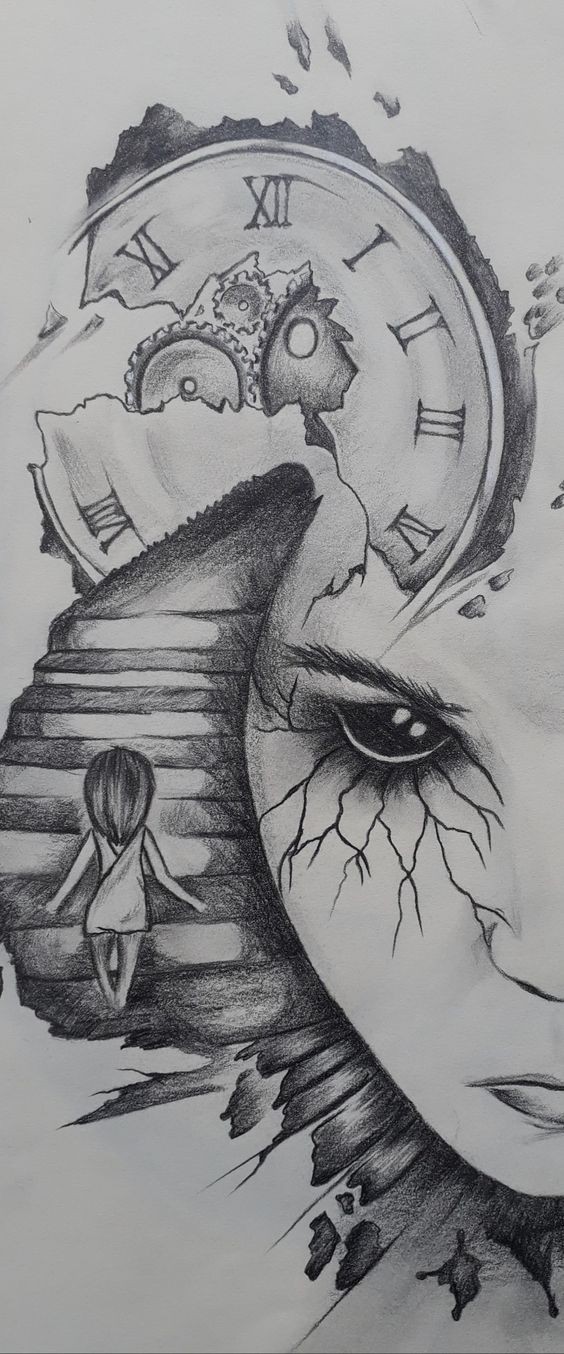The Beautiful Art of "Clock and Girl"
The concept of "Clock and Girl" in art is a captivating exploration of time, femininity, and the intricate dance between the transient and the eternal. This theme has found its way into various forms of artistic expression, from painting and sculpture to literature and photography. It resonates with viewers because it taps into universal themes of beauty, mortality, and the human experience. This article delves into the symbolic significance, historical context, and artistic interpretations of the "Clock and Girl" motif.
Symbolism of the Clock
The clock is one of the most potent symbols in art, representing the passage of time, the inevitability of death, and the transient nature of life. Clocks, with their precise mechanisms, embody the relentless march of time, a force that governs all living beings. The ticking of a clock serves as a reminder that every moment is fleeting, emphasizing the ephemeral nature of existence.
In the context of the "Clock and Girl" motif, the clock often serves as a metaphor for the girl’s life stages. It can represent the innocence of youth, the blooming of adulthood, and the inevitable decline into old age. The clock's hands, moving steadily forward, suggest that no moment can be recaptured, highlighting the importance of living fully in the present.
The Girl as a Symbol
The girl in this artistic motif is a representation of femininity, beauty, and the various stages of life. She is often depicted in different forms—sometimes as a young child, symbolizing innocence and potential; other times as a young woman, embodying beauty, grace, and the vibrancy of life; and occasionally as an older woman, reflecting wisdom, experience, and the approach of life’s twilight.
In many artworks, the girl is portrayed in juxtaposition with the clock, creating a dialogue between her and the passage of time. This contrast can evoke a range of emotions, from the melancholy of lost youth to the serene acceptance of life's impermanence. The girl, in her various stages, represents the human experience in all its beauty and fragility.
Historical Context
The "Clock and Girl" motif has been explored in various cultures and historical periods, each bringing its unique interpretation. In European art, especially during the Renaissance and Baroque periods, time and mortality were common themes. Artists often depicted beautiful young women alongside symbols of time and death, such as clocks, hourglasses, or skulls, in a genre known as "Vanitas." These artworks were intended to remind viewers of the fleeting nature of earthly pleasures and the inevitability of death.
In more modern times, the "Clock and Girl" theme has evolved to reflect contemporary concerns. The Industrial Revolution, with its emphasis on mechanization and time management, brought a new dimension to this motif. The clock became a symbol not only of mortality but also of the pressures of modern life. Artists began to explore the tension between the natural rhythms of life, as embodied by the girl, and the artificial constraints imposed by clocks and schedules.
Artistic Interpretations
The "Clock and Girl" motif has been interpreted in myriad ways by artists across different media. Each interpretation offers a unique perspective on the relationship between time and femininity.
Painting: In painting, artists have used the "Clock and Girl" motif to explore themes of beauty, transience, and the passage of time. A well-known example is the work of Salvador Dalí, who frequently incorporated clocks into his surrealist paintings. In his masterpiece, "The Persistence of Memory," the melting clocks evoke the fluidity of time, while the absence of a human figure suggests the overwhelming and often incomprehensible nature of time. Although not directly depicting a girl, the painting’s surreal landscape invites viewers to contemplate the interaction between time and human existence.
Literature: In literature, the "Clock and Girl" theme has been explored in stories and poems that meditate on the fleeting nature of beauty and youth. Writers have used this motif to express the bittersweet nature of growing up, the loss of innocence, and the inevitability of aging. For instance, in the poem "To His Coy Mistress" by Andrew Marvell, the poet uses the image of a ticking clock to urge the young woman to seize the day and make the most of her youth before time runs out.
Photography: Photographers have also found inspiration in the "Clock and Girl" motif, often using it to create striking visual contrasts. The juxtaposition of a delicate, youthful figure with the stark, mechanical lines of a clock can create a powerful image that speaks to the tension between nature and technology, innocence and experience. This theme is particularly resonant in the context of contemporary society, where the pressure to manage time effectively often conflicts with the desire to live a more natural and spontaneous life.
Sculpture: In sculpture, the "Clock and Girl" motif can take on a three-dimensional form, allowing artists to explore the interplay between physical space and time. Sculptures that depict a girl alongside a clock can create a tangible representation of the passage of time, inviting viewers to walk around the piece and experience it from different angles. This dynamic interaction can evoke the changing perspectives that come with the passage of time, as the viewer’s relationship with the sculpture shifts with each new vantage point.
Cultural Variations
The "Clock and Girl" motif is not confined to Western art; it has also found expression in various other cultural contexts. In Japanese art, for example, the concept of "Mono no Aware" (the awareness of the impermanence of things) aligns closely with the themes of the "Clock and Girl." Traditional Japanese woodblock prints often depict beautiful women (bijin) in scenes that subtly hint at the passage of time, whether through the changing seasons or the presence of a clock or hourglass. These artworks emphasize the fleeting nature of beauty and life, encouraging viewers to appreciate the present moment.
In Indian art, the motif might be interpreted through the lens of Hindu philosophy, where time (Kala) is seen as a cyclical force, encompassing creation, preservation, and destruction. The girl in this context could represent the eternal soul, journeying through the cycles of birth, life, and rebirth, while the clock symbolizes the temporal world that she transcends.
Modern Interpretations and Relevance
Today, the "Clock and Girl" motif continues to resonate with artists and audiences alike, as it speaks to the universal human experience of grappling with time. In an era where time management and productivity are highly valued, the image of a girl juxtaposed with a clock can serve as a poignant reminder of the need to balance efficiency with the appreciation of life’s fleeting moments.
Modern interpretations of this motif often explore themes of identity, gender, and the pressures of modern society. For instance, some contemporary artists use the "Clock and Girl" motif to comment on the expectations placed on women to maintain their beauty and youth in a world that is obsessed with time. Others may use it to explore the psychological impact of time pressure on young people, particularly in an age of digital technology and social media, where the perception of time is often distorted.
Conclusion
The art of "Clock and Girl" is a rich and multifaceted theme that has captivated artists for centuries. It offers a powerful commentary on the passage of time, the beauty and fragility of life, and the human experience. Whether through painting, literature, photography, or sculpture, the "Clock and Girl" motif continues to inspire and challenge us to reflect on our relationship with time and the fleeting nature of existence. In its many forms, this motif serves as a reminder to cherish the present moment, to recognize the beauty in the transient, and to find meaning in the ever-turning hands of the clock.






